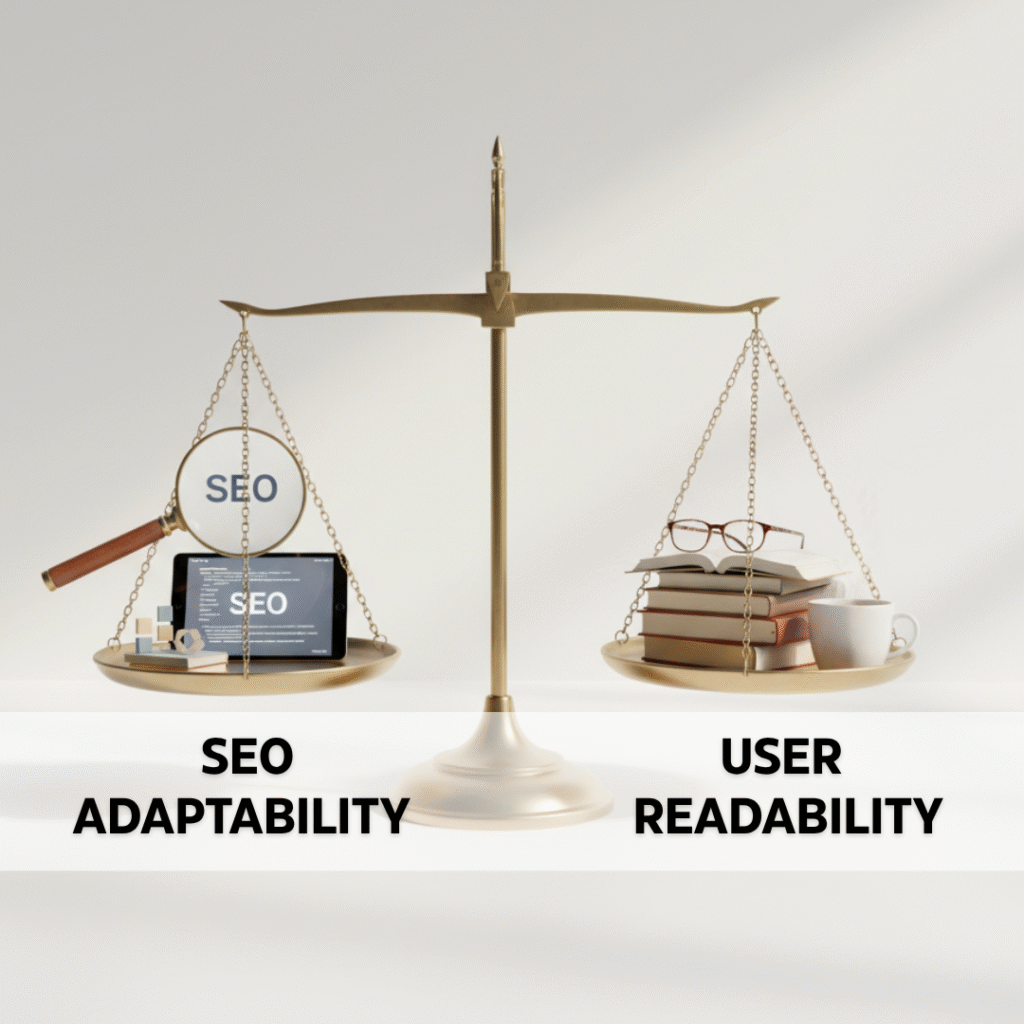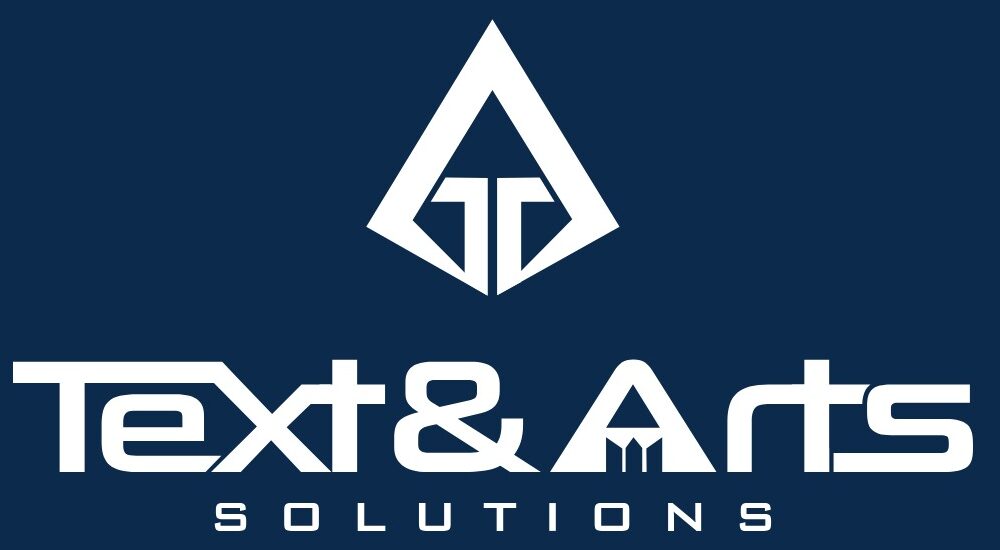Introduction
If you’ve ever stared at a blank page thinking, Do I write for Google or for people?—you’re not alone. The debate of SEO vs Reader Experience has split teams, slowed projects, and turned great ideas into keyword-stuffed mush. Here’s the reality: search engines reward content that people read, use, and share. In other words, there is no lasting SEO win without a great reader experience.
At Text & Arts Solutions, we’ve learned this lesson across hundreds of deliverables and dozens of industries. And after working for 6 years in translation across domains, we’ve seen—especially in Hindi and other Indian languages—that machines can’t capture nuance, tone, and cultural context the way humans can. The same principle powers this article: SEO vs Reader Experience is a false duel. You need both—and you can design for both.
This guide gives you a practical, step-by-step playbook: from brief to publish, English to Indian languages, headlines to Core Web Vitals, and everything in between. You’ll get frameworks, examples, checklists, and real-world cases you can apply today.
Why “SEO vs Reader Experience” Is a False Choice
Search engines aim to surface content that best satisfies user intent. Readers reward clarity, usefulness, and credibility with time on page, scroll depth, and conversions. These signals feed rankings. There’s no sustainable way to separate the two.
Define the Terms—So You Don’t Fight the Wrong Battle
- SEO: The practice of making content discoverable and understandable by search engines—covering intent alignment, structure, metadata, internal links, and technical health.
- Reader Experience (RX): The ease and satisfaction with which a person consumes your content—clarity, scannability, cognitive load, visual hierarchy, accessibility, and trust.
- The overlap: When your page precisely answers intent, is easy to scan, fast to load, and credible, you increase engagement metrics that algorithms recognize.
How Algorithms Reward Reader Experience
- Intent satisfaction drives higher CTR, longer dwell time, and better engagement.
- Clear structure (H1/H2/H3, semantic HTML, tables, lists) helps crawlers and humans.
- Performance & accessibility (Core Web Vitals, alt text, contrast) expand reach and reduce friction.
- E-E-A-T (Experience, Expertise, Authoritativeness, Trustworthiness) shows real-world credibility—author bios, sources, case specifics, and first-hand insights.
Great RX amplifies great SEO. Poor RX eventually erodes rankings.
Balancing SEO vs Reader Experience—A Practical Framework
To keep teams aligned, use this simple 80/20 lens:
- 80% People-First Craft
- Start with user intent and a clear outcome.
- Write naturally. Explain like you would to a smart colleague.
- Use visual structure to reduce cognitive load.
- 20% Search-First Optimization
- Validate keywords and SERP patterns.
- Optimize titles, meta, headers, and slugs.
- Link logically; mark up entities; compress and label media.
The Five Pillars You Can’t Skip
- Intent — What job does the reader hire your page to do?
- Clarity — Plain language, front-load value, cut filler.
- Structure — Headings, bullets, tables, and short paragraphs.
- Trust — Specifics, evidence, author bio, real examples, sensible disclaimers.
- Performance — Speed, stable layout, accessible design.
Where SEO vs Reader Experience Meet on the Page
- Headlines: Promise the outcome; include the key phrase once.
- Intros: Hook, then scope—address the search task immediately.
- Subheads: Map to user questions; mirror SERP subtopics.
- Media: Use diagrams, screenshots, or short videos with descriptive alt text.
- CTAs: Relevant, helpful, and placed where intent is satisfied (not forced).
The End-to-End Playbook (From Brief to Publish)
Research Without Rabbit Holes
- Clarify intent types: informational, transactional, navigational, or comparative.
- Scan the SERP: note People Also Ask, common subtopics, and content patterns (guides, checklists, calculators).
- Pick a focus keyword (e.g., SEO vs Reader Experience) and 8–12 supporting terms.
- Define success: What action should a satisfied reader take?
Outline for Humans, Then Layer SEO
- Create a question-led outline: each H2 solves a sub-problem.
- Add H3s where lists, steps, examples, or definitions help.
- Place the Focus Keyword in H1 and at least one H2/H3 naturally.
- Draft a working title and slug (keep both human and descriptive).
Write the First Draft Like an Editor, Not a Bot
- Lead with value in the first 150 words.
- Keep most paragraphs to 2–4 sentences.
- Use bullets and numbered lists heavily.
- Add specific examples; avoid vague platitudes.
Optimize Without Over-Optimizing
- Title (≤60 chars): include the focus phrase once.
- Meta (≤160 chars): summarize outcome + focus phrase.
- Slug (≤75 chars): short, hyphenated, readable.
- Headers: use synonyms and related terms; avoid repetition.
- Links: 2–5 internal, 1–3 high-quality external where useful.
- Images: compress, use descriptive filenames and alt text.
Design for Scannability
- Use a tight visual rhythm: heading → 2–3 sentences → list → example → next heading.
- Break up dense sections with pull-quotes or info boxes.
- Convert raw data into a small table or checklist.
Accessibility & Performance Basics
- Alt text: what the image does, not just what it is.
- Color contrast: readable on mobile in sunlight.
- Fonts: 16px+ body, adequate line height.
- Performance: compress media, defer non-critical scripts.
Publish, Measure, Iterate
Track:
- Discoverability: impressions, queries, average position.
- Engagement: CTR, scroll depth, time on page.
- Satisfaction: repeat visits, saves, shares, conversions.
- Technical: Core Web Vitals (LCP, CLS, INP).
Iterate:
- Update the intro if CTR is low.
- Rework subheads to match “People Also Ask.”
- Add a summary box if scroll depth is weak.
- Improve examples and media for clarity.
Case Studies & Examples (What the Balance Looks Like)
B2B Service Page—From Keyword-Stuffed to People-First
Context: A mid-market SaaS had a service page targeting “enterprise content migration.” It ranked on page 2 and converted poorly.
Changes we made
- Reframed the H1 to promise an outcome: “Migrate Complex Content Without Downtime.”
- Organized H2s around jobs to be done: audit, mapping, QA, training.
- Added a 7-step checklist and a risk matrix table.
- Reduced keyword usage from 24 to 9, keeping entity coverage with synonyms.
Results after iteration
- Higher CTR with a clearer title/meta.
- Improved dwell time due to scannable structure and the risk matrix.
- More demo requests per 100 visits (the CTA aligned with intent).
Lesson: UX fixes (clarity, structure, trust) lifted both engagement and conversions; rankings followed.
Blog Post—Turning a Big Topic into a Reader Journey
Context: A long explainer on “data governance” underperformed. The first screen was theory; value came late.
Changes
- New intro: a 3-line pain-point hook + outcome.
- Added an “Executive Summary” box.
- Rebuilt subheads to mirror PAA questions.
- Included two diagrams and a mini-glossary.
Lesson: Front-loading value and aligning with SERP questions is an RX improvement that algorithms also reward.
Indian Languages—Why Human Touch Wins
After working for 6 years in translation across sectors, we’ve seen that direct, literal translations—especially for Hindi and other Indian languages—often break reader trust and intent alignment.
Common issues
- Formality & address: choosing aap vs. tum affects tone.
- Idioms & metaphors: literal renderings can sound robotic or rude.
- Script & numerals: Devanagari vs. Latin digits, currency formatting.
- Domain terms: “bid,” “spread,” “limit order” often need transliteration or explanation, not naive translation.
- Mixed-language reality: audiences read in Hinglish; your SEO should recognize query patterns in both scripts.
Fixes that work
- Transcreation: keep intent and effect, adapt wording.
- Bilingual SEO: target variants in Devanagari and Latin scripts.
- Examples with local context: replace foreign analogies with Indian scenarios.
- Accessibility & inclusivity: avoid gendered defaults where unnecessary.
Result: Pages crafted with cultural nuance see higher time on page, lower pogo-sticking, and more shares—classic RX signals that support SEO.
Tactics That Resolve SEO vs. Reader Experience in Practice
Headlines & Intros
- Do: Promise a clear outcome; include the focus phrase once.
- Don’t: Stack synonyms in the H1; it reads spammy and confuses readers.
- Template: [Outcome]: How to [Solve Task] Without [Common Pain]
Example using our focus phrase
- H1: SEO vs. Reader Experience: The Balance Writers Need
- Intro: one sentence to frame the tension, one to promise a solution, one to show the plan.
Subheads that Map to Intent
Turn search-er questions into H2/H3s:
- What problem am I solving?
- What steps are involved?
- What can go wrong?
- What does “good” look like?
- How do I measure success?
The Clarity Toolkit (Steal This)
- Replace abstractions with examples.
- Use “because,” “so,” and “which means” to connect claims to reasons.
- Prefer verbs over nouns: optimize > optimization.
- Use active voice 80–90% of the time.
- Add one table or checklist per 700–900 words.
Entity Coverage Without Stuffing
- Cover related entities: tools, roles, steps, constraints, and outcomes.
- Use synonyms and natural phrasing so readers don’t hear the machine.
Visuals that Carry Their Weight
- Decision trees: when the reader must choose a path.
- Before/after screenshots: when the reader needs proof.
- Simple diagrams: when process clarity will save 300 words.
Special Notes for Hindi & Indian-Language Content
The “people-first” principle becomes even more critical in local languages.
Localization Checklist (Hindi Focus)
- Intent: Are you answering the same job the Hindi query implies?
- Tone: Choose aap/tum consistently; avoid awkward honorifics.
- Terminology: Use transliteration for technical terms when common (e.g., ट्रेड, बिड), and explain once on first use.
- Examples: Swap Western banking or sports analogies for Indian contexts.
- Script & Search: Consider both Devanagari and Latin input methods—queries might be “nivesh yojana benefits” or “निवेश योजना लाभ.”
- Readability: Shorter clauses, fewer stacked compounds; break long sentences.
- Metadata: Write meta titles/descriptions in natural Hindi; keep slugs in Roman if your CMS requires it, but ensure on-page headers align with Hindi queries.
Transcreation > Translation
When stakes are high (compliance, finance, healthcare), literal translation can mislead. Transcreation preserves intent and effect, not just words. After six years across domains, our rule is simple:
- If nuance, legality, or emotion matter—transcreate.
- If it’s a label, UI microcopy, or a standard term—translate or transliterate with a glossary.
Measurement—Proving the Balance Works
Leading Indicators (Early Wins)
- Higher CTR from clearer titles/meta.
- Better scroll depth after you front-load value and add structure.
- More saves/shares when examples are practical and local.
Lagging Indicators (Bigger Wins)
- Keyword growth for related entities and long-tails.
- Stable or rising positions for head terms.
- Conversion lift when CTAs match the intent solved on the page.
What to Do When Metrics Stall
- Low CTR → Refresh title/meta; test a pain-point hook.
- Shallow scroll → Add an “Executive Summary” box; tighten paras.
- Thin time on page → Insert diagrams and examples near the fold.
- Weak conversions → Move CTA below the key resolution point; add proof.
A People-First SEO Checklist (Copy/Paste)
- Define intent (task to be done).
- List sub-questions your reader will ask.
- Map H2/H3s to those sub-questions.
- Draft in plain language; cut filler.
- Add one example, one table/checklist, one visual per major section.
- Place SEO vs. Reader Experience phrase naturally in H1, one H2/H3, intro, conclusion, slug, and meta.
- Optimize title/meta/slug once—no stuffing.
- Link to 2–5 relevant internal pages.
- Add author bio or credentials for E-E-A-T.
- Compress images; add descriptive alt text.
- Check readability: short sentences, active voice, simple words.
- QA Hindi/Indian-language pages for tone, script, and terminology.
- Ship; measure CTR, dwell, scroll, conversions; iterate.
Get People-First SEO with Text & Arts Solutions
You don’t need to choose between machines and humans. You need a team that speaks both.
What we do
- Strategy: intent maps, topic clusters, interlinking plans.
- Content: long-form guides, UX microcopy, landing pages, product education.
- Localization: Hindi and multi-language transcreation with SEO baked in.
- Design: content design, tables/diagrams, accessibility-first layouts.
- Performance: Core Web Vitals-friendly builds and media optimization.
How we work
- Align on audience jobs and business goals.
- Build a question-led, people-first outline.
- Ship content with clean metadata and structure.
- Measure what matters; improve in cycles.
Ready to balance SEO vs. Reader Experience the right way?
Let’s turn your pages into engines of discovery and delight.
Write to us at contact@textnarts.com to get a custom content plan this week.
Conclusion
The supposed fight of SEO vs. Reader Experience is a myth. Search engines increasingly reward pages that meet intent, deliver clarity, and prove credibility. Readers reward the same with attention and action. The craft is in the balance: structure your pages for machines, write them for humans, and design them for low friction. Whether you’re publishing in English or adapting to Hindi and other Indian languages, the principle holds—transcreate for meaning, optimize for discoverability, and measure for learning. Get that right, and you’ll stop choosing sides and start winning on both.
Keywords: user intent, search intent, semantic SEO, topic clusters, people-first content, readability score, dwell time, bounce rate, Core Web Vitals, scannability, content design, transcreation, localization, Hindi SEO, E-E-A-T


